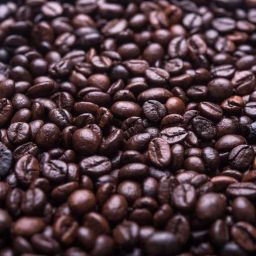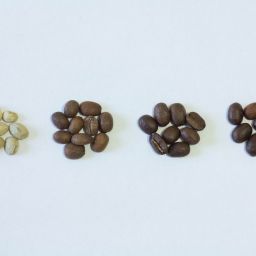
Sambuca, a distinguished Italian liqueur, is celebrated for its rich, anise-flavored profile, derived primarily from essential oils obtained from the star anise. Traditionally served neat with three coffee beans, known as “con la mosca,” meaning “with the fly,” this practice is not merely decorative but imbued with deep cultural significance.
The clear, potent spirit enjoys popularity not just in Italy but globally, appreciated for its versatility and distinctive flavor that pairs well with various culinary traditions.
The Significance of Coffee Beans in Sambuca
The tradition of garnishing Sambuca with coffee beans carries profound historical and cultural significance. Rooted in Italian customs, the three beans symbolize health, happiness, and prosperity, reflecting a blend of Christian beliefs and local folklore. In some practices, a fourth bean is added to represent luck, introducing a layer of mystique and tradition to the ritual.
This symbolic garnish does more than enhance the drink’s visual appeal; it deepens the sensory experience, marrying the liqueur’s sweet licorice notes with the robust essence of coffee.
How to Serve Sambuca with Coffee Beans
The traditional method of serving Sambuca with coffee beans is straightforward yet ritualistic. Typically, the liqueur is poured into a snifter or shot glass, followed by the addition of exactly three (or sometimes four) coffee beans.
The drink can be served neat, at room temperature or chilled, depending on personal preference. For a dramatic flair, some choose to light the Sambuca, allowing the flames to lightly roast the beans, enhancing their flavor and adding a toasty aroma to the beverage. This method not only provides a spectacle but also subtly alters the taste profile of the drink.
Creative variations on this classic include incorporating the beans into cocktails, where Sambuca’s aniseed flavor complements coffee-based drinks, adding depth and complexity. Modern mixologists experiment with these elements, crafting innovative beverages that pay homage to Italian traditions while appealing to contemporary tastes.
Whether enjoyed in its simplest form or as part of a more elaborate concoction, Sambuca with coffee beans remains a timeless classic, embodying the spirit of Italian hospitality and the rich tapestry of its cultural heritage.
Sambuca Drink Recipes
Classic Sambuca and Coffee Bean Recipe
The quintessential Sambuca serving involves a straightforward, elegant preparation. Pour a shot of clear Sambuca into a small glass, then carefully float three coffee beans atop the liqueur.
These beans—symbolizing health, happiness, and prosperity—should remain unlit to savor their natural aroma and taste. This method highlights the harmonious interplay between Sambuca’s aniseed flavor and the subtle, aromatic notes of coffee.
Flaming Sambuca with Coffee Beans
For a more theatrical presentation, the Flaming Sambuca ritual captivates and delights. Place three coffee beans in a shot glass of Sambuca, ignite the surface with a match or lighter, and allow the flames to dance briefly.
Extinguish the flame by covering the glass with your hand or a flat surface, trapping the essence of toasted coffee beans within the drink. This process not only mesmerizes onlookers but also intensifies the coffee’s aroma, adding a smoky depth to the Sambuca’s sweetness.
Sambuca and Coffee Cocktails
Innovative mixologists blend Sambuca with coffee to create sophisticated cocktails that marry the liqueur’s licorice notes with coffee’s robust character. One popular concoction involves mixing Sambuca with cold brew coffee, a touch of simple syrup, and ice, garnished with a coffee bean for an elegant finish.
Another variant includes layering Sambuca over espresso and topping it with whipped cream, creating a rich, indulgent beverage that pays homage to Italy’s storied coffee culture.
The Role of Coffee Beans
Flavor and Aroma Enhancement
Coffee beans play a crucial role in enhancing the flavor profile of Sambuca. Their rich, aromatic presence complements the sweet, aniseed essence of the liqueur, creating a multi-dimensional tasting experience.
The beans’ natural oils and essence subtly infuse the Sambuca, bridging the gap between the sharpness of the alcohol and the earthy tones of the coffee, resulting in a harmonious blend that tantalizes the palate.
Coffee Beans and Their Impact on Sambuca’s Taste
The tradition of adding coffee beans to Sambuca does more than serve symbolic purposes; it significantly influences the drink’s taste profile. Roasting the beans prior to their addition, or even lightly toasting them in the flaming Sambuca, unlocks a spectrum of flavors—ranging from slight bitterness to a mellow sweetness.
This process not only enriches the Sambuca’s inherent anise flavor but also introduces a smoky, robust undertone, elevating the liqueur to new heights of culinary artistry.
Sambuca’s Origins and Global Journey
Sambuca, an Italian anise-flavoured liqueur, traces its roots back to the early 19th century. Originally embraced within Italy for its smooth, sweet flavour and versatility, Sambuca has journeyed beyond its homeland to achieve international acclaim.
This global spread has seen the liqueur adapt to various cultural preferences while maintaining its core identity. Over time, the consumption of Sambuca has evolved, with innovative serving methods and cocktail recipes broadening its appeal, yet the tradition of serving it with coffee beans remains a beloved constant, symbolizing the blend of tradition and innovation.
Symbolism and Traditions
The practice of adding coffee beans to Sambuca is laden with symbolism, deeply rooted in Italian culture. Each bean represents a wish for health, happiness, and prosperity, with variations in the number of beans reflecting local traditions or personal beliefs.
This ritual varies across cultures but consistently symbolizes good fortune and well-being. The incorporation of coffee beans not only enriches the drinking experience but also connects it to broader themes of hospitality and celebration across different societies.
FAQs
Common Questions About Sambuca and Coffee Beans
- Should Sambuca be refrigerated? Sambuca does not need to be refrigerated due to its high alcohol content. It can be stored at room temperature, though some prefer it chilled for a more refreshing taste.
- Is Sambuca a vodka or tequila? Sambuca is neither vodka nor tequila; it is a liqueur flavored with anise, elderberries, and sugar. Its unique profile sets it apart from other spirits.
- Can you eat the coffee beans in Sambuca? Yes, the coffee beans in Sambuca are meant to be eaten after drinking the liqueur. They enhance the drink’s flavor and add a final touch to the experience.
Summary and Final Thoughts
The journey of Sambuca with coffee beans is a testament to the rich tapestry of Italian culinary and cultural traditions. From its origins to its place on the global stage, Sambuca has maintained its essence while evolving to meet diverse tastes.
The symbolic use of coffee beans underscores the deep-rooted traditions that define the Sambuca experience, offering a blend of history, flavor, and ritual. As we continue to explore and enjoy Sambuca in both traditional and innovative ways, we celebrate not just a liqueur but a cultural heritage that brings people together across the world.








